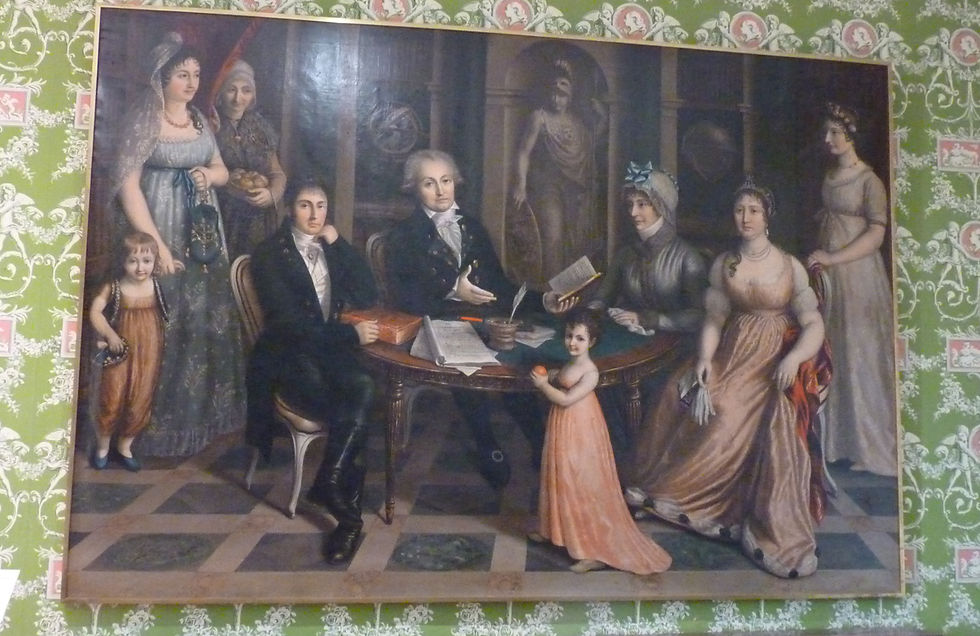A Grassois hero of World War II
- Tom Richardson
- Oct 11
- 4 min read

On the seafront at Antibes stands a monument to a landing by the submarine HMS Unbroken on 21st April 1942 of a Captain in the Special Operations Executive ('SOE') called Peter Churchill. At the time, the Cote d’Azur was governed by the Vichy régime under Maréchal Pétain. It was Churchill’s second clandestine landing in France, the first having been four months earlier near Théoule.
He was accompanied by three other agents (who are not named on the memorial). One of them was a radio operator called Isidore Newman, who was to join an undercover réseaux (‘network’) known as URCHIN, which was created and led by a Grassois, Francois Basin.
The SOE was the body famously instructed by Winston Churchill to ‘set Europe ablaze’. Its activities in France have been written about many times, most famously by MRD Foot, who published an official history in 1966. He revised it in a second edition published in 2006 because he had become uneasy over some of his conclusions as more information became available. That seems to be typical of the written evidence on SOE: there are all kinds of stories which often appear to reflect the prejudices and self-esteem of the people involved.

But Francois Basin, known as Francis in all the British documentation, undoubtedly seems to have been one of the good guys and very modest about his achievements. In 1971, he gave an account of his activities to a writer, playwright and screenwriter named Andre Gillois, who had been an aide to Charles de Gaulle in London during the war.
Basin was born in Grasse in 1903, the son of a railway worker, so he would have been 37 in 1940. There seems to be no record of what he did before the war, and it’s not clear how he arrived in the UK before or perhaps just after the fall of France in June 1940. He enlisted in the British army in August of that year. He was recruited into the SOE, promoted to lieutenant and sent to France in August 1941, only to be promptly arrested by the French (Vichy) police in Cannes.
SOE had constructed identity papers and a cover story for him, but Basin decided there was more safety in staying closer to the truth. He used his own name and his mother’s address in Grasse, and his papers showed that he had been mobilized with the Chasseurs Alpins, one of whose barracks was in Grasse. The Chasseurs had contributed soldiers to a small French force sent to help defend Norway in 1940 and Basin’s cover was that he had been one of them and had been evacuated to England in April 1940. The story must have worked, because he was released in October 1941.
After that, he established himself in Cannes and developed his URCHIN network, apparently based in a ‘Villa Isabelle’ (now demolished, but the development is still known as Palais Isabelle) on the road out to the west. As a circuit organizer, his job was to lead, plan and recruit new members. He is said to have created a number of cells across the Var, Alpes-Maritimes and even as far as Marseilles. His agents collected information – in his interview with Gillois, he said he had one with access to the reports of the Vichy council of ministers – and in some cases carried out sabotage. His reports had initially to be smuggled out via Switzerland and Spain, which was why SOE provided him with a radio operator in April 1942 to enable two-way communication.
Gillois also tells a story that Basin tried to persuade Maurice Chevalier, whose relations with the occupiers remain a source of controversy to this day, to leave for London in 1941. He had no success, Chevalier claiming that he would lose everything he owned if he left.

In August of 1942, Basin was arrested in Cannes and imprisoned in Lyon by Vichy’s Surveillance du Territoire organisation, although his luck held. After the U.S. and British landings in North Africa in November, the Nazis took over the ‘free’ Vichy zone and sympathetic members of its regime seem to have helped to have him released from prison before the Germans could catch up with him. Eventually, having hidden in the Auvergne he made his way back to Provence where he started to build another circuit. He was evacuated to London in August 1943.

He worked as an instructor at an SOE training school in Beaulieu in Hampshire and at SOE’s ‘Section F’ (France) section, probably at their HQ in Baker Street, London. In September 1944, he left the British army and joined the Free French forces staff.
It is known that Basin died in Paris in October 1975, so perhaps he never returned to Grasse (his mother would have been over 80 by 1945). There also seems to be no information about what he did after the war. Like so many, he perhaps never wanted to dwell on his activities, although there is a record of a conversation with a Mme Patrimonio in 1947 in the national archives in Paris in addition to his interview with André Gillois in 1971.
But there is no doubt about his contribution. He was awarded the MBE by the UK in 1945 and made an Officer of the Legion d’Honneur by France in 1951.



Comments